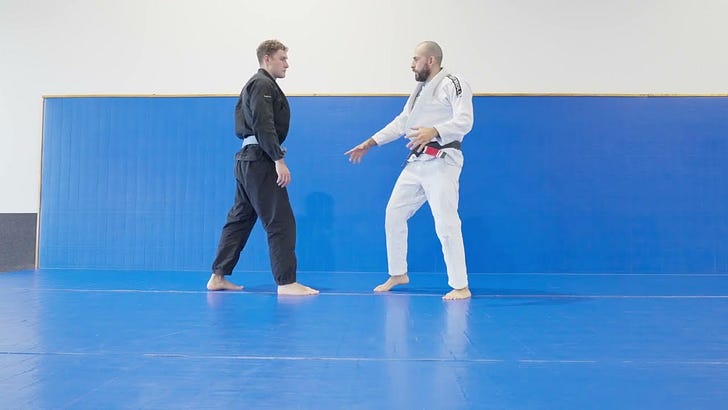Had a few conversations with some students recently that went something like this:
“How do you know exactly what you want in each session.”
“I just have a plan. I have a singular focus from start to finish. I adapt, but every adaptation is simply a matter of trying to get me back to where I want to be.”
“Well, it’s easy for you since you have been training for so long.”
“Yes, but that doesn’t mean you can’t start training with this emphasis now.”
Let’s face it. The Rabbit-hole in jiu-jitsu goes deep.
Everyday it seems easier and easier to get lost in the ever-expanding and abundant world of jiu-jitsu. With this evolution of the sport, it becomes more important to stay focused.
I’ve had this conversation with quite a few of my students recently and the theme of learning how to “mind-map” training started to become a recurring theme.
“How do you do it if you haven’t been training that long?”
My response to the beginners that asked this question was this:
First step: Focus on Defense.
Second step: Start identifying little things that are going well. This could be a particular takedown, pass, sweep or submission. It could be a proclivity for underhooks —anything.
If you’re a beginner, I remain adamant that 80% of your training focus should be on defense and survival but you should still be focusing on some of the positives. The positives are what will keep you coming back to jiu-jitsu. [PS. If you can’t find any positives, I strongly suggest you read Sunday’s mindset check in here].
In that 20%, here are some examples of what you’ll start noticing.
You’re good at a scissor sweep from closed guard.
You have a takedown that you’re exceptionally good at compared to others (IE: You got a great single but maybe trash at everything else)
You keep catching triangle chokes from open guard.
You’re good at passing with the bull-fight pass.
Etc
This is how you start figuring out your strengths.
The next step is to start identifying paths to and from these positions. I wrote all about it in this free post here but the TLDR is If you’re good at say, a cross-collar choke from closed guard, start studying it. Study it in depth and learn the ins and outs of the position. Learn transitions to and from the collar choke and keep doing this until it stalls out. Then find the next thing.
Now, what does this have to do with mind-mapping?
I’m glad you asked.
Once you start to identify strengths, you will start noticing patterns in your training. The realization of patterns will lead to understanding that a lot of your training is “if/then.” In other words, if your opponent does X, then you do Y. For most situations, there are only 2-3 different reactions your opponent can give you. As such, it doesn’t take much effort to start pre-planning based on different movements. This is your new “mind-map”.
If you’ve been following along over the last few weeks, I’ve talked extensively about my stand up game. Specifically, I’ve shared how to engage on the feet and a few of my favorite foot sweeps. Again, I love foot sweeps because they give me the opportunity for high ROI/low risk takedowns that don’t take me out of position if I fail.
With these foot sweeps, I’ve laid out HOW I plan my attack based on that “first look” my opponent gives me: Their Stance.
In my opinion, because every match starts on the feet, this is the first step to mind-mapping: Your Takedown offense.
In this email, you’re going to see HOW I set up my takedown strategy based on how my opponent stands. I’ll go further into a series from the ground in subsequent emails, but the lowest hanging fruit here is the standing position.
There biggest variable here will be stance. How my opponent stands will dictate how I play and we’ll get into it here.
Let’s dive in!
Keep reading with a 7-day free trial
Subscribe to Jiujitology to keep reading this post and get 7 days of free access to the full post archives.


